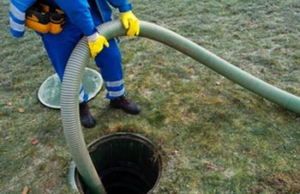A haircut involves cutting or trimming hair to a desired length and shaping it for a specific look.
This style suits all face shapes and is a great option for thick, straight, or wavy hair. It also looks good with a fade or undercut. Contact Haircut San Francisco now!

A haircut is a term used to refer to the act or instance of cutting the hair. However, the word can also be used to describe a style of haircut, which is an overall appearance that may include trimming or removing the hair, or even just altering its shape and length. It can be done for a variety of reasons, including styling, fashion, or simply to achieve better hygiene.
While a barber can perform a haircut, it is often done by a trained professional, such as a hairdresser. There are many different haircut styles, and it takes time and practice to master them all. Some of the most common haircuts include a layered cut, a blunt cut, and a bang trim.
The first step in a good haircut is properly washing the client’s hair. This ensures that the hair is free of dirt and oil, which will make it easier for the stylist to work with. Next, the hair should be conditioned to soften it and reduce frizz. After this, the hair should be blow-dried so that it is straight and smooth.
Once the hair is dry, the stylist should prepare to cut it. This is usually done by putting on a protective covering, such as a cape or towel, which will protect the hair from accidental spills or stains. Depending on the client’s desired look, the hair should then be parted into several sections.
For example, if the client wants a layered haircut, the hair should be divided into five or seven parts. The first section should be taken near the forehead and ear, then two side sections should be taken. Each of these should be twisted and secured with a large clip. The rest of the hair can then be cut, starting from the front and working backwards.
Once the basic cuts have been made, the stylist can start blending in other techniques. These might include point cutting, a technique where each curl is assessed and individually cut to create movement and texture. Another technique is the 45 degree cut, which is known for its triangular shape and graduated edges. This type of haircut can create diagonal movement from the back to the front, and it is usually accentuated by a heavy weight line running through the perimeter.
Cutting
In finance, a haircut is a discount on the value of an asset. It is often used as a risk management tool when assets are being used as collateral for loans or transactions. The discount can be a result of many factors, including market volatility, credit risk and liquidity.
For example, if a small bank wants to borrow money from a large financial institution, it must put up assets as collateral for the loan. The lender may choose to lower the value of those assets by a certain percentage, or “haircut,” to reduce its exposure to credit and market risks. This is done by creating a buffer that absorbs price fluctuations.
Haircuts can also be applied to fees and charges associated with trading, such as a market maker’s spread or margin requirement. They can also be used to reduce the amount of outstanding interest payments or a portion of bonds payable during a debt restructuring process.
The haircuts that are applied to securities in these contexts have significant implications for lenders, borrowers and the overall financial system. They impact the amount of available assets that can be pledged to secure loans, or for government bond issuance. They also affect the level of leverage and liquidity in a broader financial system. Increasingly volatile markets, for instance, may require higher haircuts, which could increase leverage and liquidity risks.
As such, the size and application of haircuts must be carefully considered to ensure they do not create procyclical effects that amplify business cycle fluctuations in market prices and erode financial stability. Moreover, excessively large haircuts can force borrowers to sell assets or withdraw funds from their accounts, which could trigger a liquidity crisis. To avoid such a crisis, it is important that brokers and other traders understand the haircuts applied to their tradeable capital. This information can help them make informed trading decisions.
Styling
A hairstyle, hairdo or coiffure is the manner in which a person wears their hair. This style can be influenced by a variety of factors, including fashion, social norms, and personal preferences. It can also be influenced by culture, religion, or ethnicity. Hair styling has been practiced for thousands of years, ranging from hair braiding to the use of hair accessories. The word hairstyle is derived from the French word corte, meaning ‘headdress’ or ‘head ornament.’ Hairstyles have been depicted in art from the ancient world, and they have always been a part of personal grooming.
The style of a person’s hair can be altered by using various tools and techniques, such as blow drying, combing, brushing, styling, curling, or teasing the hair. Styling products are used to help achieve a particular look, and they may include hairspray, waxes, gels, clays, lotions, or mousses. A person’s hair can be parted, brushed back, combed into a pompadour or other styles, and held in place with hairpins or clasps.
Dry cutting, where the stylist cuts while your hair is dry, is a technique that’s great for curly or kinky textures as it allows them to be cut in their natural state. A bob is an example of a haircut that’s typically dry-cut, with the weight line grazing your collarbone. A mullet is a variant of the bob featuring a side-swept fringe. A wolf cut is another variation of the bob, with more of a frat shag style that’s been popularized by celebrities such as Billie Eilish and Camila Cabello.
Ombre is a hair color that’s dark at the roots and gradually fades to lighter as it moves toward the ends of your hair. There are different variations of this style, including sombre and babylights. Babylights are subtle highlights that are applied to thin, wispy sections of your hair.
Maintenance
A good haircut requires regular maintenance, which includes frequent trips to the salon for trimmings and using high-quality hair products. Your stylist will recommend the best shampoo, conditioner, and styling products to keep your hair healthy and looking its best.
Your stylist can also spot damage or dryness and recommend customized treatments to help your hair look and feel its best. Plus, regular trims remove faded ends and keep your color vibrant for longer.
Whether your style is low or high maintenance depends on your hair texture and how you want to wear it. For example, a straight bob may require more styling tools and upkeep than a wavy, beachy cut that embraces your natural texture. In addition, your lifestyle and commitment to maintaining a healthy hair routine play a role in how much maintenance your style needs.


